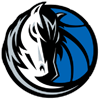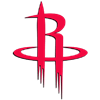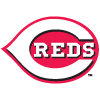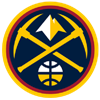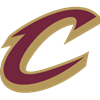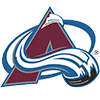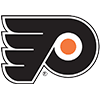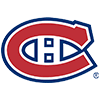Happy Independence Day to all of you enjoying fireworks with friends and family as well as to those of you comforting your dog while they hide from those same fireworks in the shower, and a belated Happy Canada Day to those of you doing the same thing north of the border. If you happen to be reading this in Algeria, Belarus, Burundi, Cape Verde, Comoros, Malawi, Rwanda, the Solomon Islands, Somalia or Venezuela, all of which celebrated independence days over the weekend or will do so in the next few days, Happy Independence Day to you as well.
While first-half and second-half splits in baseball are usually anchored to the All-Star break, the actual midpoint of the season comes right around the Fourth of July. Teams around the league have just recently or are just about to cross the 81-game threshold, so it's a great time to step back and take stock of where we sit in our fantasy leagues. In theory, any deficit we find ourselves in is still surmountable, as there are as many games left to erase it as there were in which it grew.
Of course, that's not necessarily how things play out. Deficits that have built up over the first half presumably exist largely because of talent disparities between teams rather than mere random variance. There's a reason seven of last year's 10 playoff teams — all but the Yankees, Cardinals and Braves — were already in playoff position this time last year.
There's still
Happy Independence Day to all of you enjoying fireworks with friends and family as well as to those of you comforting your dog while they hide from those same fireworks in the shower, and a belated Happy Canada Day to those of you doing the same thing north of the border. If you happen to be reading this in Algeria, Belarus, Burundi, Cape Verde, Comoros, Malawi, Rwanda, the Solomon Islands, Somalia or Venezuela, all of which celebrated independence days over the weekend or will do so in the next few days, Happy Independence Day to you as well.
While first-half and second-half splits in baseball are usually anchored to the All-Star break, the actual midpoint of the season comes right around the Fourth of July. Teams around the league have just recently or are just about to cross the 81-game threshold, so it's a great time to step back and take stock of where we sit in our fantasy leagues. In theory, any deficit we find ourselves in is still surmountable, as there are as many games left to erase it as there were in which it grew.
Of course, that's not necessarily how things play out. Deficits that have built up over the first half presumably exist largely because of talent disparities between teams rather than mere random variance. There's a reason seven of last year's 10 playoff teams — all but the Yankees, Cardinals and Braves — were already in playoff position this time last year.
There's still reason for optimism, however, as seen in the case of Atlanta, who went all the way to win it all after sitting under .500 on July 4. Their example should be particularly inspiring to those playing in fantasy leagues with playoff setups, as it's hardly an insurmountable task to squeak into the final playoff spot after sitting in the middle of the pack for half the year, and anything can happen with a couple hot weeks at that point.
You'll need some strong performances to make up that ground, but excellent half-season performances show up every year. Here are a few notable second halves from last year, using July 4 as the end of the first half:
- Adam Wainwright led the league with 11 wins, having won just six games up to that point
- Dylan Floro and Giovanny Gallegos each saved 13 games after combining for just three saves through Independence Day
- Cal Quantrill led all qualified AL pitchers with a 2.11 ERA, nearly halving the 4.20 ERA he'd managed through July 4
- Frank Schwindel, who'd only played in four games in the first half, finished ninth among qualified hitters in the second half with a .329 average
- Jorge Polanco tied for fourth with 23 homers (a number that by itself would have been a career high) after hitting just 10 in the first half
- Nicky Lopez stole 14 bases, exactly half of the 28 steals he's managed across his four-year career
The next Quantrill or Schwindel is out there, ready to help teams charge up the standings in the second half. They could be among the group of risers listed below, a set of players that skews quite young, including some players who look to be reaching a new level in the third season of their careers and one who seems to have found a new level in his first week as a big leaguer.
RISERS
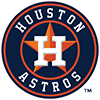 Cristian Javier, SP, Astros: Javier began the year in the Astros' bullpen, with his poor 12.5 percent walk rate from last season likely contributing to the team's view of him as not quite reliable enough to be anything more than a swingman. He entered the rotation in late April, however, and quickly emerged as one of the best starters in the league. Among pitchers who have thrown at least 60 innings, his 2.58 ERA ranks 12th, while his 2.57 FIP ranks seventh and suggests that ERA is very deserved. He's gotten to that figure primarily due to his 34.3 percent strikeout rate, a number that ranks third among that same group, though he's also trimmed his walk rate to a perfectly adequate 8.7 percent. He's been especially dominant in his last two starts, holding the Yankees and Angels to one run on just one hit while striking out an incredible 27 batters in 14 innings and walking just one. Javier still doesn't entirely look like a traditional starter given that his slider is the only secondary pitch he throws more than seven percent of the time, but that kind of performance is too good to ignore.
Cristian Javier, SP, Astros: Javier began the year in the Astros' bullpen, with his poor 12.5 percent walk rate from last season likely contributing to the team's view of him as not quite reliable enough to be anything more than a swingman. He entered the rotation in late April, however, and quickly emerged as one of the best starters in the league. Among pitchers who have thrown at least 60 innings, his 2.58 ERA ranks 12th, while his 2.57 FIP ranks seventh and suggests that ERA is very deserved. He's gotten to that figure primarily due to his 34.3 percent strikeout rate, a number that ranks third among that same group, though he's also trimmed his walk rate to a perfectly adequate 8.7 percent. He's been especially dominant in his last two starts, holding the Yankees and Angels to one run on just one hit while striking out an incredible 27 batters in 14 innings and walking just one. Javier still doesn't entirely look like a traditional starter given that his slider is the only secondary pitch he throws more than seven percent of the time, but that kind of performance is too good to ignore.
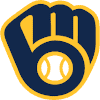 Brandon Woodruff, SP, Brewers: Things appeared to be quite worrisome for Woodruff in early June, when it was revealed that he was dealing with Raynaud's syndrome, a condition that causes decreased blood flow to the fingers that resulted in numbness in his right hand. Thankfully, the issue has proved manageable with medication, and he was able to return last week to make a pair of dominant starts. In 11 combined innings against the Rays and Pirates, he allowed just one run on eight hits while striking out 18 batters and walking none. His 0.82 ERA in those outings represents a major improvement from his 4.74 ERA he managed in his first nine starts before hitting the injured list with an ankle issue, though early fears about a downturn in his performance were likely overblown. His 28.5 percent strikeout rate and 7.0 percent walk rate from before his injury were both within a point of the marks he managed last season, and he now sits better than he did last year in both categories after his two dominant outings last week.
Brandon Woodruff, SP, Brewers: Things appeared to be quite worrisome for Woodruff in early June, when it was revealed that he was dealing with Raynaud's syndrome, a condition that causes decreased blood flow to the fingers that resulted in numbness in his right hand. Thankfully, the issue has proved manageable with medication, and he was able to return last week to make a pair of dominant starts. In 11 combined innings against the Rays and Pirates, he allowed just one run on eight hits while striking out 18 batters and walking none. His 0.82 ERA in those outings represents a major improvement from his 4.74 ERA he managed in his first nine starts before hitting the injured list with an ankle issue, though early fears about a downturn in his performance were likely overblown. His 28.5 percent strikeout rate and 7.0 percent walk rate from before his injury were both within a point of the marks he managed last season, and he now sits better than he did last year in both categories after his two dominant outings last week.
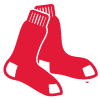 Jarren Duran, OF, Red Sox: Duran's nascent breakout campaign hit a brief snag last week when his decision not to vaccinate himself against COVID-19 prevented him from joining his teammates in Toronto. He'll reportedly be eligible to cross the border the next time the Red Sox play in Canada, a sign that he's recognized his sudden importance to the big-league squad. Duran only played in three MLB games across the first two months of the season, but he's been up since mid-June as the team's everyday center fielder and leadoff man and has made the most of his opportunity. In 75 plate appearances this year, he's hit .319/.373/.507 with a homer and four steals. A .389 BABIP may inflate that line somewhat, but this looks like a legitimately new and improved version of Duran thanks to his 18.7 percent strikeout rate, a mark that represents a huge improvement on his untenable 35.7 percent mark from his 33-game debut last year. His contact quality has also improved, as he owns a 9.1 percent barrel rate, more than double his 4.4 percent mark from last season.
Jarren Duran, OF, Red Sox: Duran's nascent breakout campaign hit a brief snag last week when his decision not to vaccinate himself against COVID-19 prevented him from joining his teammates in Toronto. He'll reportedly be eligible to cross the border the next time the Red Sox play in Canada, a sign that he's recognized his sudden importance to the big-league squad. Duran only played in three MLB games across the first two months of the season, but he's been up since mid-June as the team's everyday center fielder and leadoff man and has made the most of his opportunity. In 75 plate appearances this year, he's hit .319/.373/.507 with a homer and four steals. A .389 BABIP may inflate that line somewhat, but this looks like a legitimately new and improved version of Duran thanks to his 18.7 percent strikeout rate, a mark that represents a huge improvement on his untenable 35.7 percent mark from his 33-game debut last year. His contact quality has also improved, as he owns a 9.1 percent barrel rate, more than double his 4.4 percent mark from last season.
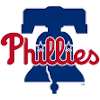 Darick Hall, 1B, Phillies: Vinnie Pasquantino was supposed to be the rookie first baseman whose call-up generated the most excitement last week, but while the young Royal managed just two hits in his first five major-league games, the unheralded Hall came up and homered three times in his first three big-league contests. With the Phillies needing another bat due to Bryce Harper's fractured thumb, the team called up Hall and immediately inserted him in the cleanup spot. There's a significant catch with Hall in that he's just now making his big-league debut at age 26 and was barely even considered a fringe prospect, so he could hardly look more like a Quad-A starter kit. That said, Quad-A types often fail due to their swing-and-miss issues preventing them from getting to their power, but that doesn't seem to describe Hall, who struck out just 20.7 percent of the time in 192 Triple-A games across the last two seasons. Don't overreact to a tiny sample from a player without much pedigree, but there's enough here with Hall to make him interesting as long as he regularly hits in the middle of a strong lineup at a great hitters' park.
Darick Hall, 1B, Phillies: Vinnie Pasquantino was supposed to be the rookie first baseman whose call-up generated the most excitement last week, but while the young Royal managed just two hits in his first five major-league games, the unheralded Hall came up and homered three times in his first three big-league contests. With the Phillies needing another bat due to Bryce Harper's fractured thumb, the team called up Hall and immediately inserted him in the cleanup spot. There's a significant catch with Hall in that he's just now making his big-league debut at age 26 and was barely even considered a fringe prospect, so he could hardly look more like a Quad-A starter kit. That said, Quad-A types often fail due to their swing-and-miss issues preventing them from getting to their power, but that doesn't seem to describe Hall, who struck out just 20.7 percent of the time in 192 Triple-A games across the last two seasons. Don't overreact to a tiny sample from a player without much pedigree, but there's enough here with Hall to make him interesting as long as he regularly hits in the middle of a strong lineup at a great hitters' park.
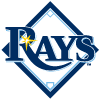 Harold Ramirez, OF, Rays: The Cubs traded Ramirez to the Rays in late March for Esteban Quiroz, a 30-year-old with no big-league experience who owns a .545 OPS in Triple-A this season. The Cubs can perhaps be forgiven for letting Ramirez go, as he came into the season with a 91 wRC+ in 221 big-league games alongside poor defensive numbers in the outfield corners, though they perhaps should have taken the interest from the Rays as a sign that there was something more there. As is so often the case, the Rays saw talent the rest of the league had missed, as Ramirez is now hitting .323/.372/.444 (good for a 140 wRC+) through 66 games. He's coming off a run of four straight multi-hit games, though his hot streak really dates back to the start of June. Since June 1, he's hitting .398/.447/.554, a performance that has earned him an everyday role. Ramirez's season-long numbers do show a bit of good fortune in his .359 BABIP, and his 5.8 percent barrel rate is unimpressive, but his strong 13.8 percent strikeout rate means he should be able to maintain a good batting average.
Harold Ramirez, OF, Rays: The Cubs traded Ramirez to the Rays in late March for Esteban Quiroz, a 30-year-old with no big-league experience who owns a .545 OPS in Triple-A this season. The Cubs can perhaps be forgiven for letting Ramirez go, as he came into the season with a 91 wRC+ in 221 big-league games alongside poor defensive numbers in the outfield corners, though they perhaps should have taken the interest from the Rays as a sign that there was something more there. As is so often the case, the Rays saw talent the rest of the league had missed, as Ramirez is now hitting .323/.372/.444 (good for a 140 wRC+) through 66 games. He's coming off a run of four straight multi-hit games, though his hot streak really dates back to the start of June. Since June 1, he's hitting .398/.447/.554, a performance that has earned him an everyday role. Ramirez's season-long numbers do show a bit of good fortune in his .359 BABIP, and his 5.8 percent barrel rate is unimpressive, but his strong 13.8 percent strikeout rate means he should be able to maintain a good batting average.
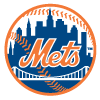 David Peterson, SP, Mets: Peterson entered the season with a career 4.64 ERA in 24 starts and one relief appearance, with an above-average 47.1 percent groundball rate failing to make up for sub-par strikeout and walk numbers. That package may have made him a back-end starter on a bad team but left him stuck in the minors on Opening Day for the Mets. He was up and down in the early part of the season but has been in the majors since late May and has pitched well enough to hold down a rotation role, posting a 3.24 ERA in 10 starts and two relief appearances. He's gotten there by producing career highs in both strikeout rate (24.7 percent) and groundball rate (54.5 percent). That's a rarer combination than you might think; among pitchers who have thrown at least 50 innings this season, only four others (Aaron Ashby, Alex Cobb, Shane McClanahan and Kyle Wright) have managed a groundball rate north of 50 percent alongside a strikeout rate above 24 percent. That makes Peterson a strong choice as long as the Mets' health troubles keep him in the rotation.
David Peterson, SP, Mets: Peterson entered the season with a career 4.64 ERA in 24 starts and one relief appearance, with an above-average 47.1 percent groundball rate failing to make up for sub-par strikeout and walk numbers. That package may have made him a back-end starter on a bad team but left him stuck in the minors on Opening Day for the Mets. He was up and down in the early part of the season but has been in the majors since late May and has pitched well enough to hold down a rotation role, posting a 3.24 ERA in 10 starts and two relief appearances. He's gotten there by producing career highs in both strikeout rate (24.7 percent) and groundball rate (54.5 percent). That's a rarer combination than you might think; among pitchers who have thrown at least 50 innings this season, only four others (Aaron Ashby, Alex Cobb, Shane McClanahan and Kyle Wright) have managed a groundball rate north of 50 percent alongside a strikeout rate above 24 percent. That makes Peterson a strong choice as long as the Mets' health troubles keep him in the rotation.
FALLERS
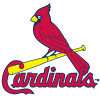 Jack Flaherty, SP, Cardinals: Flaherty dealt with shoulder troubles down the stretch last season, returning to pitch just 2.1 innings very late in the year. Shoulder issues popped up again in March, preventing him from making his season debut until mid-June. He returned to make just three ineffective starts, pitching a total of eight innings with a 5.63 ERA and 6:9 K:BB, before hitting the injured list with yet more shoulder problems. He's been shut down from throwing for at least two or three weeks, and he'll have to go through a lengthy buildup process at that point. Given that he's already had one unsuccessful return this season, it's likely the Cardinals will want to be extra careful with him this time around. With an uncertain return date and no guarantees he'll remain healthy and effective once he's back in action, it's time to think about whether he's worth stashing in single-season leagues. His dynasty value has taken a significant hit as well, as it's very hard to trust he'll remain healthy next season, and there's no telling how much damage the long run of injuries will do to his effectiveness.
Jack Flaherty, SP, Cardinals: Flaherty dealt with shoulder troubles down the stretch last season, returning to pitch just 2.1 innings very late in the year. Shoulder issues popped up again in March, preventing him from making his season debut until mid-June. He returned to make just three ineffective starts, pitching a total of eight innings with a 5.63 ERA and 6:9 K:BB, before hitting the injured list with yet more shoulder problems. He's been shut down from throwing for at least two or three weeks, and he'll have to go through a lengthy buildup process at that point. Given that he's already had one unsuccessful return this season, it's likely the Cardinals will want to be extra careful with him this time around. With an uncertain return date and no guarantees he'll remain healthy and effective once he's back in action, it's time to think about whether he's worth stashing in single-season leagues. His dynasty value has taken a significant hit as well, as it's very hard to trust he'll remain healthy next season, and there's no telling how much damage the long run of injuries will do to his effectiveness.
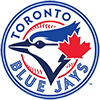 Jose Berrios, SP, Blue Jays: I've typically not ended up with many shares of Berrios in recent years, as there's nearly always someone who sees a bit more to his profile than I do and grabs him a round before I start thinking about him. Based on his performance thus far this season, I'm thankful that happened again this winter. The 28-year-old righty struggled to a 5.62 ERA through the end of May, and while his first three June starts saw him post a 26:3 K:BB and a 2.45 ERA, that rebound didn't last long. His last three outings have been quite poor, as he's struck out five and walked five across 11.2 innings while posting a 12.34 ERA and 2.57 WHIP. Even his most recent outing, which saw him give up just two runs in five frames to the Rays, is hardly encouraging, as he struck out just three while allowing 10 baserunners. Berrios' velocity and pitch mix aren't meaningfully different from where they stood in recent seasons, so a bounceback could happen eventually, but his poor results aren't surprising given that his 18.3 percent strikeout rate trails his career mark by over five points.
Jose Berrios, SP, Blue Jays: I've typically not ended up with many shares of Berrios in recent years, as there's nearly always someone who sees a bit more to his profile than I do and grabs him a round before I start thinking about him. Based on his performance thus far this season, I'm thankful that happened again this winter. The 28-year-old righty struggled to a 5.62 ERA through the end of May, and while his first three June starts saw him post a 26:3 K:BB and a 2.45 ERA, that rebound didn't last long. His last three outings have been quite poor, as he's struck out five and walked five across 11.2 innings while posting a 12.34 ERA and 2.57 WHIP. Even his most recent outing, which saw him give up just two runs in five frames to the Rays, is hardly encouraging, as he struck out just three while allowing 10 baserunners. Berrios' velocity and pitch mix aren't meaningfully different from where they stood in recent seasons, so a bounceback could happen eventually, but his poor results aren't surprising given that his 18.3 percent strikeout rate trails his career mark by over five points.
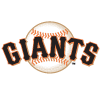 Brandon Belt, 1B, Giants: Belt is a 34-year-old with a spotty health track record, so there's always a risk that the beating his body has taken over his 12-year career will catch up to him. Based on his numbers since his return from knee inflammation in mid-June, it looks like that might be happening now. In 50 plate appearances, he's hit .170/.320/.268, with only a 14.0 percent walk rate keeping his line from completely cratering. The main worry of this most recent stretch is his sudden inability to make contact, as he's struck out 32.0 percent of the time, giving him a career-worst 28.2 percent strikeout rate on the year. He'd started showing signs of slipping in this direction last season, when his 27.0 percent strikeout rate came in far above the 22.1 percent mark he'd averaged over the prior five seasons. That mark came with a 73rd percentile hard hit rate, however, while this year he's slipped to the 30th percentile. It's possible he turns it around as he puts his latest injury further behind him, but if this is a sign he's finally hitting a wall, it wouldn't be a big surprise.
Brandon Belt, 1B, Giants: Belt is a 34-year-old with a spotty health track record, so there's always a risk that the beating his body has taken over his 12-year career will catch up to him. Based on his numbers since his return from knee inflammation in mid-June, it looks like that might be happening now. In 50 plate appearances, he's hit .170/.320/.268, with only a 14.0 percent walk rate keeping his line from completely cratering. The main worry of this most recent stretch is his sudden inability to make contact, as he's struck out 32.0 percent of the time, giving him a career-worst 28.2 percent strikeout rate on the year. He'd started showing signs of slipping in this direction last season, when his 27.0 percent strikeout rate came in far above the 22.1 percent mark he'd averaged over the prior five seasons. That mark came with a 73rd percentile hard hit rate, however, while this year he's slipped to the 30th percentile. It's possible he turns it around as he puts his latest injury further behind him, but if this is a sign he's finally hitting a wall, it wouldn't be a big surprise.
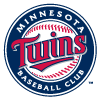 Emilio Pagan, RP, Twins: Pagan was never more than the head of a closer committee in Minnesota, as his nine saves through the end of June led the team but represented only half of the team's total. After giving up 10 runs (nine earned) and blowing two saves across his final five appearances of the month, however, he was officially removed from closing duties at the start of July. That terrible stretch means his ERA now sits at 5.06, though his ERA estimators tell very different stories. His 5.03 FIP suggests his ERA accurately reflects his performance, but his 3.33 xFIP says he deserves to see more high-leverage opportunities. The difference is due to his awful 27.3 percent HR/FB rate. FIP says he deserves all those homers and therefore his poor ERA, but xFIP chalks that all up to bad luck and suggests he shouldn't actually be giving up many homers considering his 50.0 percent groundball rate, a number that dwarfs his previous career high of 34.0 percent. Between that number and his 30.5 percent strikeout rate, there's reason to believe he could return to the ninth inning eventually, but his recent struggles mean that may not happen for quite a while.
Emilio Pagan, RP, Twins: Pagan was never more than the head of a closer committee in Minnesota, as his nine saves through the end of June led the team but represented only half of the team's total. After giving up 10 runs (nine earned) and blowing two saves across his final five appearances of the month, however, he was officially removed from closing duties at the start of July. That terrible stretch means his ERA now sits at 5.06, though his ERA estimators tell very different stories. His 5.03 FIP suggests his ERA accurately reflects his performance, but his 3.33 xFIP says he deserves to see more high-leverage opportunities. The difference is due to his awful 27.3 percent HR/FB rate. FIP says he deserves all those homers and therefore his poor ERA, but xFIP chalks that all up to bad luck and suggests he shouldn't actually be giving up many homers considering his 50.0 percent groundball rate, a number that dwarfs his previous career high of 34.0 percent. Between that number and his 30.5 percent strikeout rate, there's reason to believe he could return to the ninth inning eventually, but his recent struggles mean that may not happen for quite a while.







